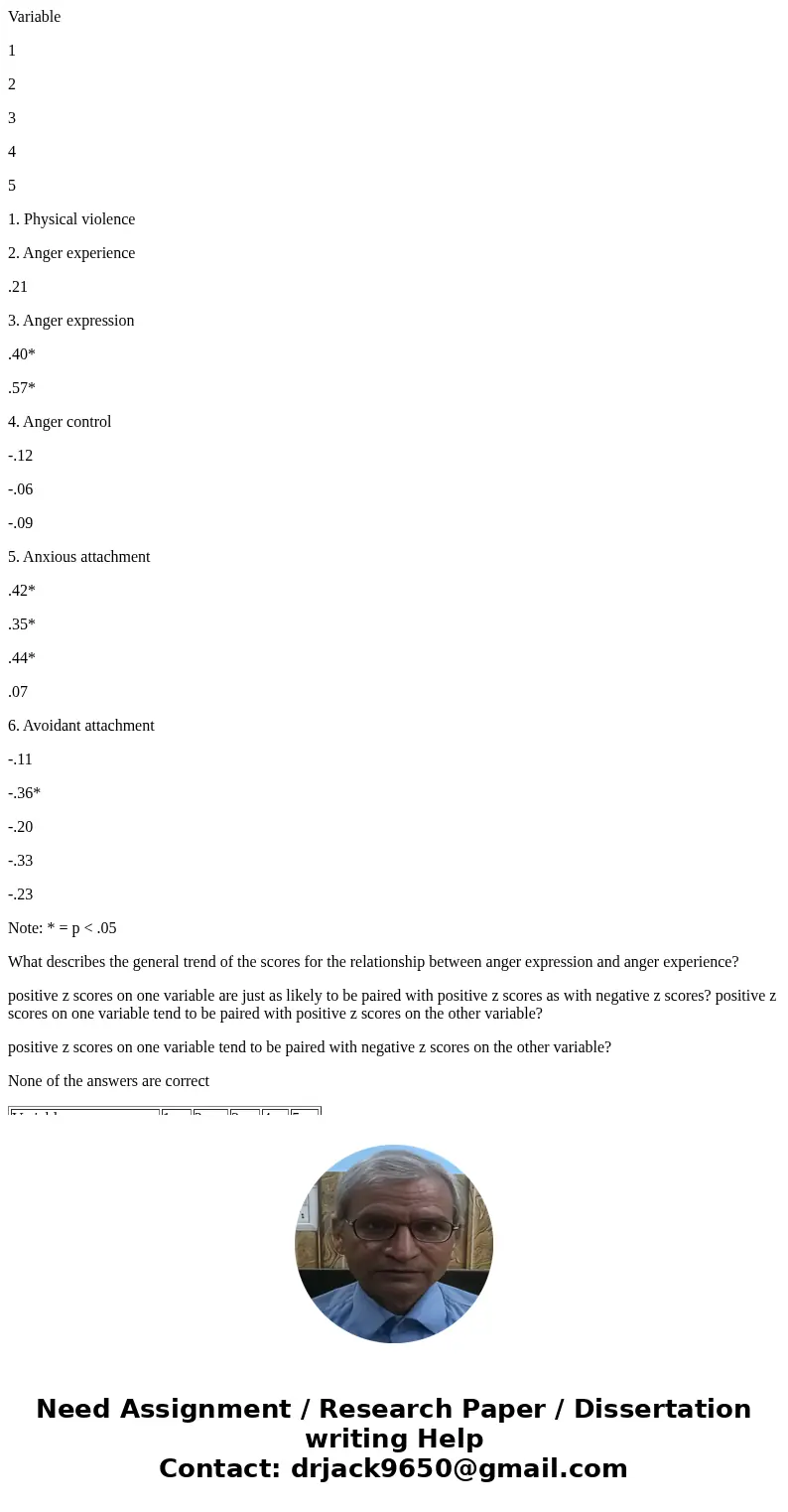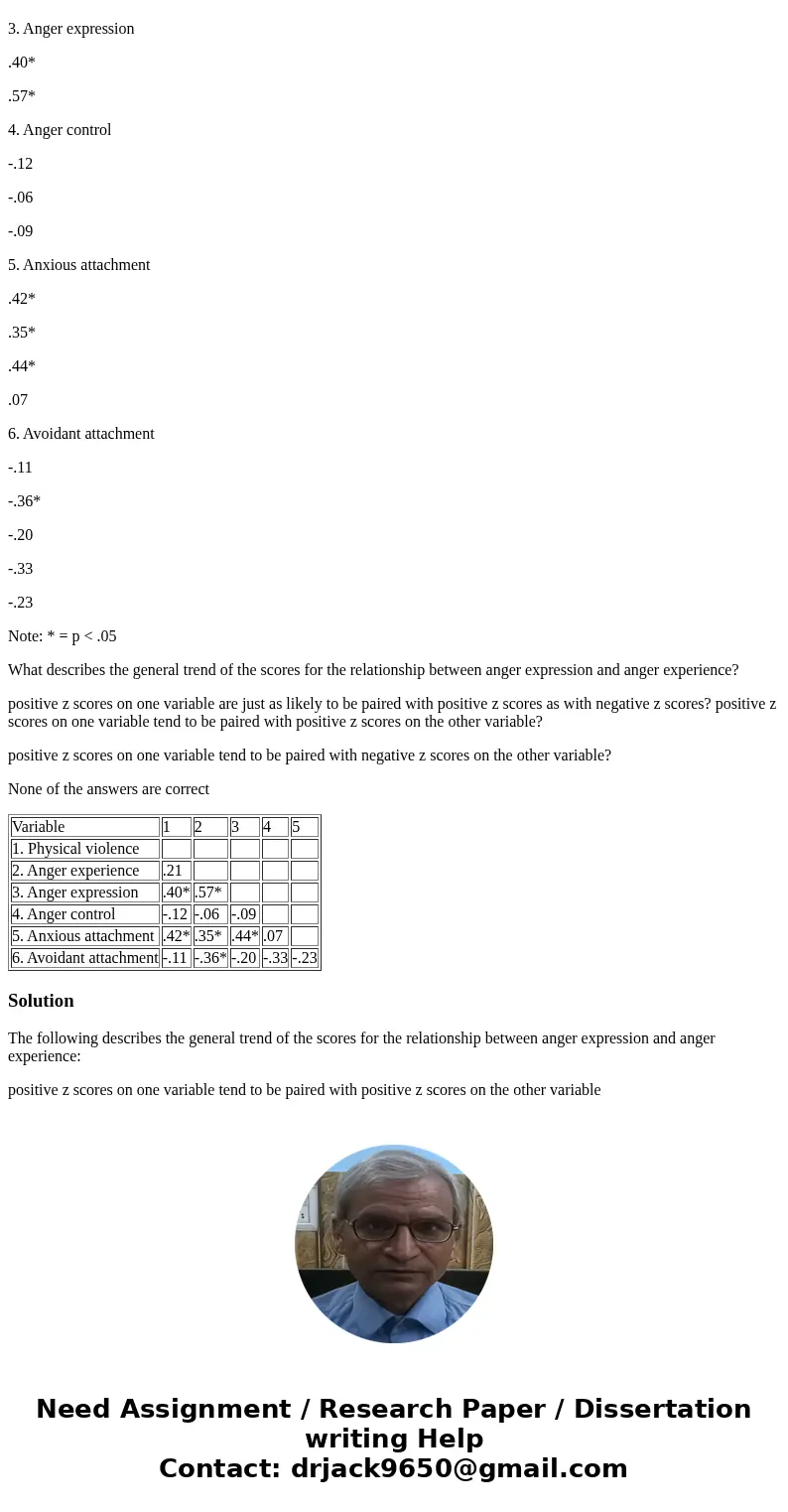Variable 1 2 3 4 5 1 Physical violence 2 Anger experience 21
Variable
1
2
3
4
5
1. Physical violence
2. Anger experience
.21
3. Anger expression
.40*
.57*
4. Anger control
-.12
-.06
-.09
5. Anxious attachment
.42*
.35*
.44*
.07
6. Avoidant attachment
-.11
-.36*
-.20
-.33
-.23
Note: * = p < .05
What describes the general trend of the scores for the relationship between anger expression and anger experience?
positive z scores on one variable are just as likely to be paired with positive z scores as with negative z scores? positive z scores on one variable tend to be paired with positive z scores on the other variable?
positive z scores on one variable tend to be paired with negative z scores on the other variable?
None of the answers are correct
| Variable | 1 | 2 | 3 | 4 | 5 |
| 1. Physical violence | |||||
| 2. Anger experience | .21 | ||||
| 3. Anger expression | .40* | .57* | |||
| 4. Anger control | -.12 | -.06 | -.09 | ||
| 5. Anxious attachment | .42* | .35* | .44* | .07 | |
| 6. Avoidant attachment | -.11 | -.36* | -.20 | -.33 | -.23 |
Solution
The following describes the general trend of the scores for the relationship between anger expression and anger experience:
positive z scores on one variable tend to be paired with positive z scores on the other variable


 Homework Sourse
Homework Sourse